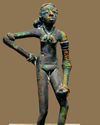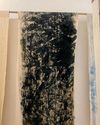
In 1978, a 23-year-old Indian Air Force pilot, flying his single-engine Chetak helicopter, noticed a strange contraption near the 17,982 foot Khardung La pass. It was virtually in the middle of nowhere, and it fired his curiosity.
“It was right on top of the Khardung La ridge,” Manmohan Bahadur, who retired as air-vice marshal, told THE WEEK. “If you are at Leh, and if you look towards Khardung La, the antenna was located about 400 metres east of the pass, and bang on the ridgeline. My seniors in the IAF told me that it possibly had something to do with intercepting Chinese broadcasts or radio transmissions. It became a point to watch out for while flying over the ridge.”
Bahadur later commanded a helicopter unit in Leh, from where he would fly sorties to places in the Nubra Valley, Daulat Beg Oldie and Thoise, and would notice the device regularly.
“It was only after I retired from service that I found out what its real purpose was,” he said. “It was a listening device to detect signals from Chinese missile tests and nuclear devices in their Lop Nor desert.”
From up in the helicopter, the contraption looked like a television antenna, with three-four horizontal poles and another three-four vertical ones, all fixed on a single big pole. Next to the structure was a hut. “The hut might have housed a power generator because it was dark and possibly covered with soot, and there were traces of oil spillage,” said Bahadur.
From the hut there was a band of cables that took off downhill.
“For all one knows, the structure may still be there. It will all be junk now with the important equipment taken out,” he added.
Esta historia es de la edición October 13, 2024 de THE WEEK India.
Comience su prueba gratuita de Magzter GOLD de 7 días para acceder a miles de historias premium seleccionadas y a más de 9,000 revistas y periódicos.
Ya eres suscriptor ? Conectar
Esta historia es de la edición October 13, 2024 de THE WEEK India.
Comience su prueba gratuita de Magzter GOLD de 7 días para acceder a miles de historias premium seleccionadas y a más de 9,000 revistas y periódicos.
Ya eres suscriptor? Conectar

POSTERS OF PROTEST
Appupen is a cartoonist who has published a few graphic novels, the latest being Dream Machine, about how AI can be a great 1 tool for an! authoritarian regime.

CLASH OF THE CIVILISATION
Even as the discovery of the Indus Valley Civilisation completes a century, some key aspects of this ancient culture remain mysterious, including its script. While the controversy over whether it was disrupted by an Aryan invasion may now be discredited, the debate over Indus ancestry and current links continues

A PROVEN PATHWAY TO PEACE
Low-cost, easy to implement, immediate results, and scientifically verified.

FOOTBALL GIVES THEM A KICK
For the children of Manipur and Mizoram, the great game is a way to a prosperous future

BATTLE FOR TOMORROW
Over the past decade, much has been said about India's potential as a leading global power.

THE TONGUE THAT TURNED
Why Greek survived while Latin and Sanskrit declined

USTAD ZAKIR HUSSAIN 1951-2024: HIS MUSIC WAS THERAPY TO THE WORLD
Flautist and Grammy co-winner Rakesh Chaurasia remembers the maestro

The magic of indigo
I really can't imagine why more of us don't throng Goa each December for the Serendipity Arts Festival alone. The festival, in its ninth year now, has the entire Panjim town celebrating.

NEW YEAR.NEW HOPE
EQUITY MARKETS HAVE TURNED VOLATILE OF LATE. WHAT TO EXPECT IN THE NEW YEAR

Seeking middle ground in Middle East
The collapse of assumptions is like the end of the world-or worldview. We assumed conwith the 20th century. But wars in Russia-Ukraine, Gaza, Yemen, Sudan, Somalia and Lebanon prove us wrong. Western defence officials now raise the nuclear threat level.